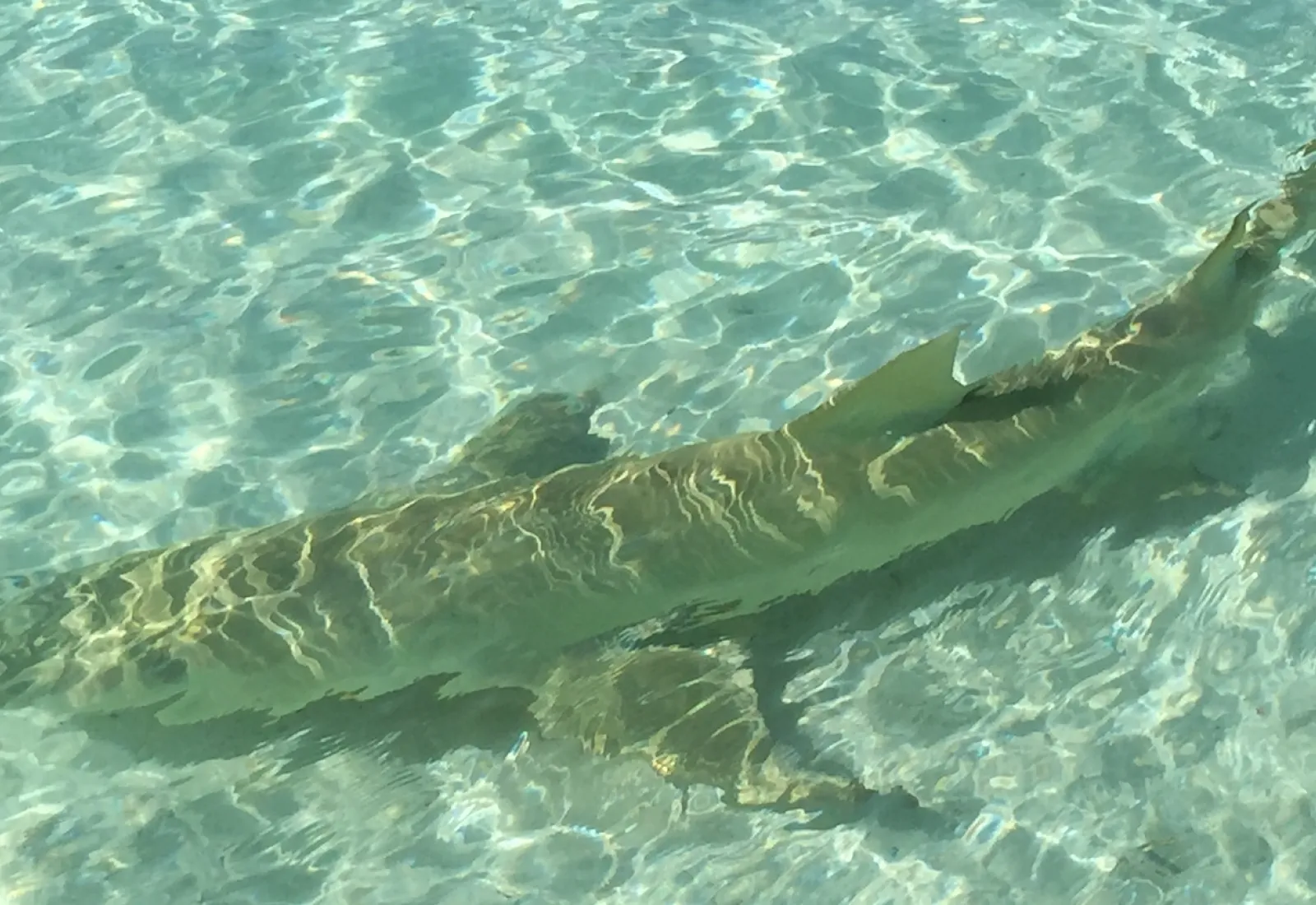
Since 2012, the entire exclusive economic zone of French Polynesia has been classified as a shark sanctuary. As such, no species has the right to be fished if it is within the EEZ. Twenty species of sharks now reign in peace. Among them we find the lemon shark. It is widely distributed in Polynesian waters, it is found in all the archipelagos and visible both outside the lagoons and inside or in the passes.

Primarily piscivorous, it feeds on benthic fish but if the opportunity arises, it will not hesitate to attack the rays or even its own congeners. The lemon shark can live up to 30 years but does not reach sexual maturity until quite late, around 15 years old, when its size exceeds 2 meters. It is a viviparous species, that is to say that its young develop in the uterus of the mother, receiving the elements necessary for their growth through an umbilical cord, like mammals. Gestation lasts an average of 10 months, and the female can give birth to 1 to 15 pups, each measuring about 50 centimeters. Unlike mammals, there is no parental care in sharks. Barely born, they are already autonomous. Reproduction in this species occurs only every 2 years, which, added to its late sexual maturity, causes the lemon shark population to increase only very slowly.
To ensure the survival of its young, the female will give birth inside the lagoons, at the level of calm and shallow areas, away from predators and where food is plentiful. These places then become real natural nurseries. The young lemon sharks will evolve in the lagoons around two years before reaching the ocean.
{"preview_thumbnail":"/sites/default/files/styles/video_embed_wysiwyg_preview/public/video_thumbnails/nH8Cpb54704.jpg?itok=vwkmyTr8","video_url":"https://www.youtube.com/watch?v=nH8Cpb54704","settings":{"responsive":1,"width":"854","height":"480","autoplay":0},"settings_summary":["Embedded Video (Responsive)."]}

In Tetiaroa we are fortunate to have a large number of shark nurseries. The lagoon being shallow, only young individuals stay there, the adults will stay outside. The low tourist pressure and lack of feeding, make the Tetiaroa atoll an excellent site to observe and thus better understand the natural behavior of these sharks.
Sources
- Guide des poissons de Tahiti et ses îles, Philippe Bacchet
- Fishes of the Indian ocean and Red sea, Marc Taquet & Alain Diringer
- Requins de Tahiti et ses îles, Bernard Begliomini
- The breeding biology of lemon sharks at a tropical nursery lagoon, K. A. Feldheim & al, The Royal Society, July 2002
- Preliminary investigation of the Ecology of Reef sharks in their nursery areas, University of Florida, University of Washington & CRIOBE
- FishBase
- FFESSM
- Observatoire des requins de Polynésie française : Requins de Polynésie


